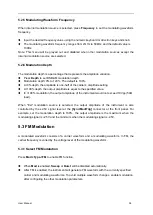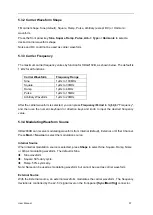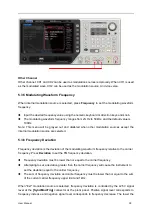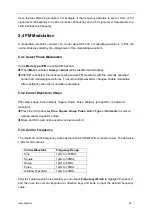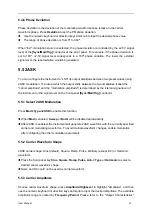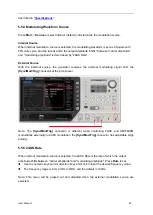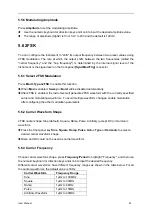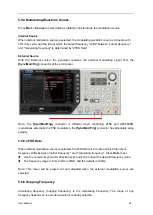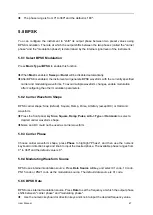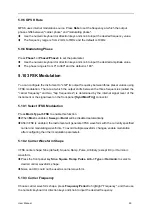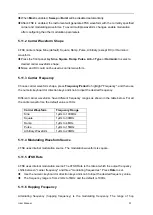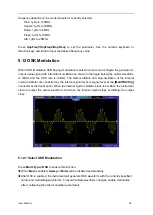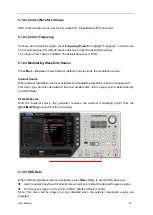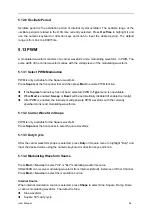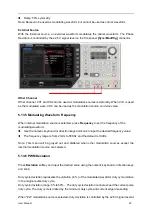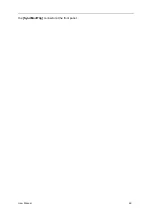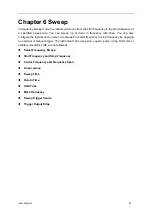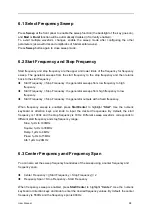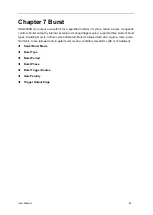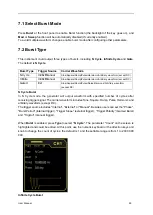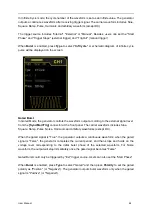
User Manual 50
Different carrier waveforms have different frequency ranges as shown in the table below. For all
the carrier waveforms, the default value is 1KHz.
Carrier Waveform
Frequency Range
Sine
1μHz to 100MHz
Square
1μHz to 30MHz
Ramp
1μHz to 4MHz
Pulse
1μHz to 15MHz
Arbitrary Waveform
1μHz to 20MHz
5.10.4 Modulating Waveform Source
3FSK uses internal modulation source. The modulation waveform is square.
5.10.5 3FSK Rate
3FSK uses internal modulation source. The 3FSK Rate is the rate at which the output frequency
shifts between "carrier frequency" and two "modulating frequencies". Press
Rate
to set.
Use the numeric keyboard or direction keys and knob to input the desired frequency value.
The frequency range is from 2mHz to 1MHz and the default is 100Hz.
5.10.6 Hopping Frequency
Alternating frequency (hopping frequency) is the modulating frequency. The range of hop
frequency depends on the carrier waveform currently selected.
Sine: 1μHz to 100MHz
Square: 1μHz to 30MHz
Ramp: 1μHz to 4MHz
Pluse:
1μHz to 15MHz
Arb: 1μHz to 20MHz
Press
HopFreq1/HopFreq2
to set the parameter. Use the numeric keyboard or direction keys and
knob to input the desired frequency value.
5.11 4FSK Modulation
You can configure the instrument to "shift" its output frequency between four preset values using
4FSK modulation. The rate at which the output shifts between the four frequencies (called the
"carrier frequency" and three "hop frequencies") is determined by the internal signal level of the
instrument or the signal level on the front-panel
[Sync/Mod/Trig]
connector.
5.11.1 Select 4FSK Modulation
Press
Mod->Type->4FSK
to enable this function.

